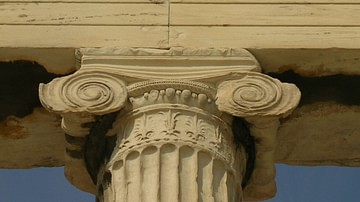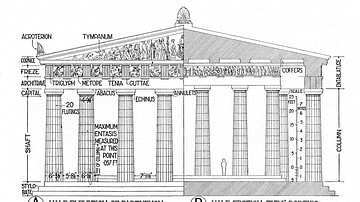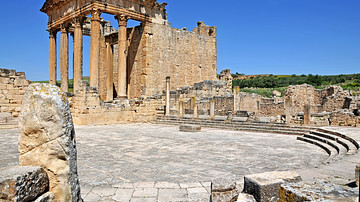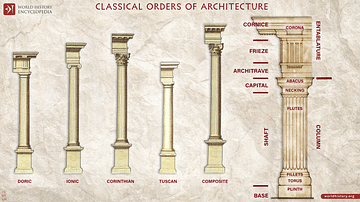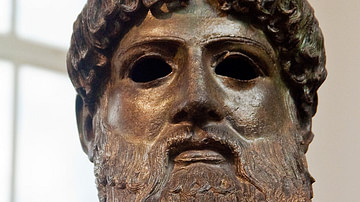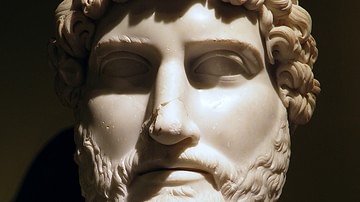The Temple of Olympian Zeus in Athens, also known as the Olympieion, was built over several centuries starting in 174 BCE and only finally completed by Roman emperor Hadrian in 131 CE. Its unusually tall columns and ambitious layout made the temple one of the largest ever built in the ancient world.
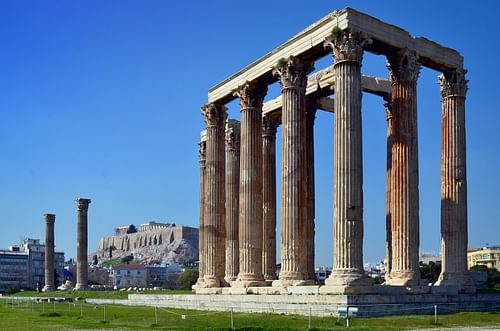
Historical Overview
Located south-east of Athens' acropolis near the River Ilissos, the temple would become the city's largest. The site shows evidence of habitation from the Neolithic period while Pausanias claimed the ancient sanctuary to Zeus was first created at the site by the mythical figure of Deukalion. The earliest archaeological evidence of a temple in the area dates to the 6th century BCE. The tyrant Peisistratos the Younger began to build a new and much bigger Doric temple in 515 BCE. The plans were devised by the architects Antistates, Callaeschrus, and Antimachides but work got no further than the limestone base before Peisistratos was deposed and the project was abandoned.
Building work began again in 174 BCE under Antiochos IV Epiphanes, the King of Syria. He employed the skills of the Roman architect Cossutius and by 163 BCE the columns and entablature of the now Corinthian order temple were finally erected. Unfortunately, once again the project fell by the wayside upon the death of Antiochos. Another couple of centuries passed before no less a figure than Hadrian, during his stay in Athens between 124 and 125 CE, took up the construction again. Sulla had actually stolen a few of the columns in 86 BCE for re-use in Rome's Temple of Jupiter and Augustus had dabbled a little with rebuilding the temple in the early 1st century CE but it was Hadrian, the great philhellene, who finally managed to finish one of the biggest ever ancient temples in 131 CE.
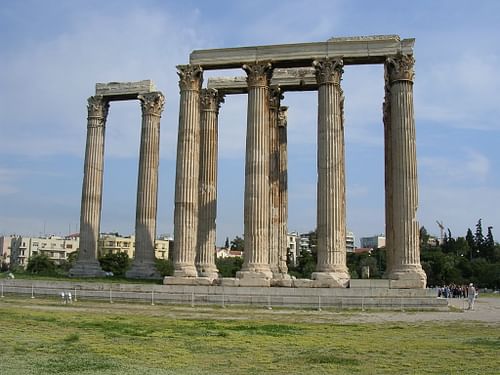
Between 124 and 132 CE a rectangular precinct wall was built around the temple, Roman baths were added to the site, and a monumental arch 18 m high, Hadrian's Arch, set at the entrance to the new sanctuary area. Also in 131/2 CE, the Temple of Zeus Panhellenios was built to the south of the main temple and in 150 CE the Temple of Kronos and Rhea added nearby. These buildings were then enclosed within the main complex by the Valerian Wall, a fortification built between 256 and 260 CE. In 450 CE the Basilica Olympieion was built along the northern side of the original precinct wall.
Layout & Dimensions
The temple was given extra grandeur by being built in an open space of 250 x 130 m. This area was enclosed by a low poros wall buttressed with regularly spaced Corinthian columns set along the interior face. A propylon gate in Hymettan marble was placed in the north-west corner of the wall. In the centre of this rectangle the massive marble Temple of Zeus measured 110.35 x 43.68 m. The Corinthian columns are unusually tall at 17.25 m and have a diameter of 1.7 m and 20 flutes. The long side presented 20 columns each and the short sides 8 (dipteral octastyle). These were placed in double rows along the length and triple rows at each short side. Thus there were originally 104 columns. The columns are capped by highly decorative Corinthian capitals carved from two massive blocks of marble. Within the cella were gigantic chryselephantine (gold and ivory) statues of Zeus and the temple's main benefactor Hadrian, who was given equal status to the great Greek god.
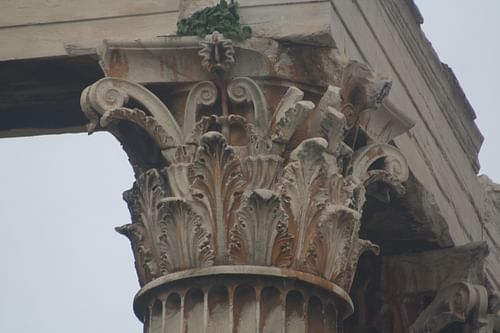
The temple suffered over the centuries and much of its material was re-used in other buildings so that today only 15 of the temple's columns are still standing, 2 in the south-west corner and 13 at the south-east corner. One other column collapsed as recently as 1852 CE in a storm and now lies across the site with its column drums picturesquely spread along a perfect line.
